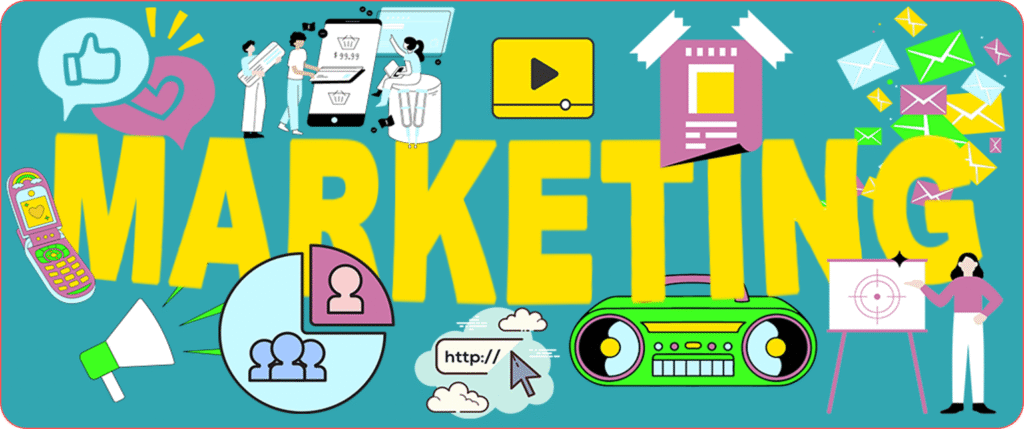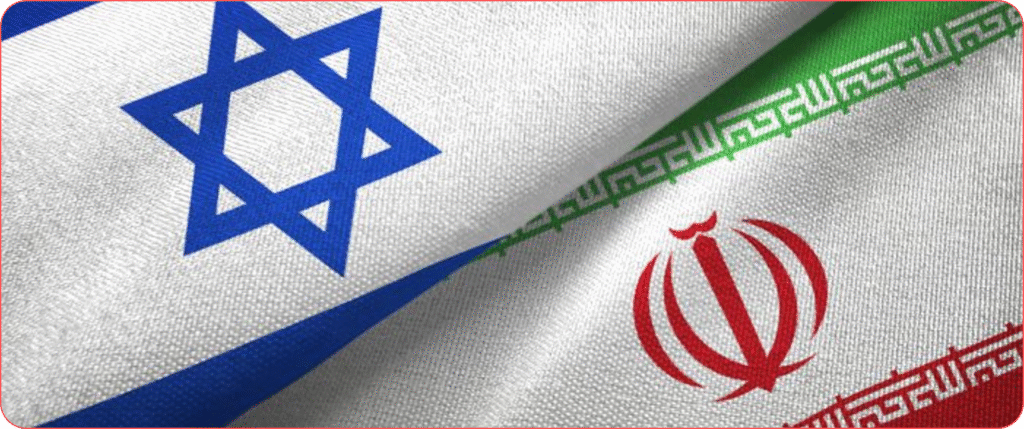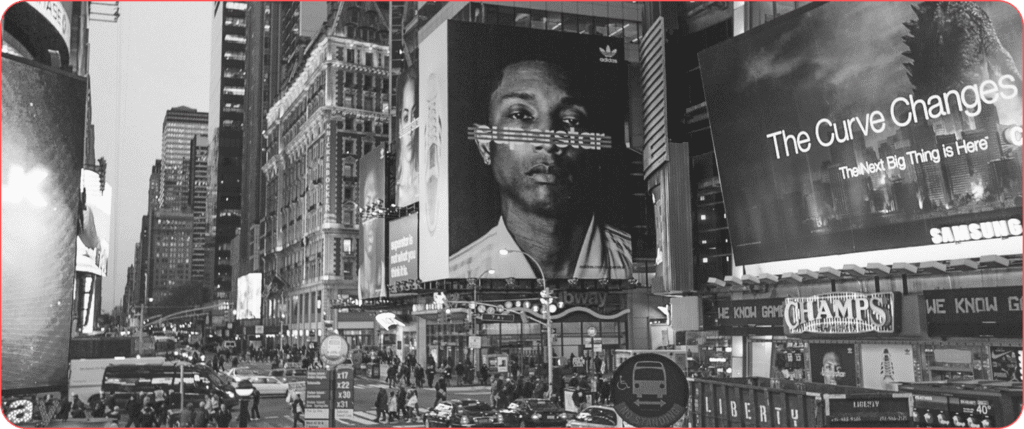In the fast-paced digital age, marketing is no longer just about selling products—it’s about creating meaningful connections, fostering trust, and building lasting loyalty. As we navigate 2025, brands face a complex landscape shaped by evolving consumer behaviors, technological advancements, and fierce competition. This post dives into recent marketing practices, shifting trends, audience dynamics, communication strategies, and actionable ways to boost brand equity while keeping audiences engaged. Let’s explore how brands can outshine the competition and prepare for the future of brand communication, backed by authentic data and real-world insights.
Recent Marketing Practices: What’s Driving Success in 2025?
Marketing in 2025 is defined by data-driven personalization, authenticity, and multi-channel engagement. Here’s a closer look at the practices shaping the industry:
-
AI-Powered Personalization: Brands leveraging AI for hyper-personalized experiences are seeing significant returns. A 2025 study found that 70% of businesses using AI personalization achieved a 200% ROI, transforming how they connect with consumers. From tailored email campaigns to dynamic website content, AI helps brands meet individual needs at scale.
-
Influencer Marketing Evolution: Influencer marketing has matured, with brands prioritizing micro-influencers (10,000–100,000 followers) for authenticity and niche engagement. Only 25% of marketers worked with influencers boasting over 100,000 followers in 2024, while micro-influencer campaigns, like Bitly’s Instagram pilot, delivered 5x higher impressions and 82% follower growth.
-
Social Media as a Trust-Builder: Social platforms are no longer just marketing channels—they’re trust hubs. According to the 2025 Sprout Social Index™, 78% of consumers say a brand’s social media presence significantly impacts trust, particularly among younger audiences. Brands like Barclays use “edutainment” (educational + entertaining content) to engage followers effectively.
-
First-Party Data Strategies: With third-party cookies phasing out, 36% of marketers now prioritize first-party data (e.g., purchase history, website registrations). This shift, driven by privacy regulations, enables brands to build accurate, owned datasets that double revenue from single ad placements.
These practices highlight a move toward consumer-centric marketing, where trust, relevance, and personalization reign supreme.
Shifting Trends: What’s Changing the Marketing Game?
The marketing landscape is evolving rapidly, driven by technology and changing consumer expectations. Here are the key trends reshaping the industry in 2025:
-
Short-Form Video Dominance: Short-form videos, especially on platforms like Instagram and TikTok, are the go-to format. 84% of social media users have an Instagram profile, and 61% use it to discover their next purchase. Brands are investing in dynamic, engaging videos to capture attention in seconds.
-
Inclusive Marketing: Consumers demand diversity and representation. Brands like Procter & Gamble (with their “Widen the Screen” campaign) and Oreo (partnering with PFLAG for LGBTQ+ inclusion) are setting benchmarks by featuring diverse voices and fostering inclusivity, resonating with socially conscious audiences.
-
Chatbot-Driven Commerce: Chatbots are revolutionizing customer interactions. By 2024, retail spending via chatbots reached $142 billion, up from $2.8 billion in 2019. WhatsApp, with 2 billion users, powers campaigns like Tata Cliq’s, which achieved a 57% click-through rate and $500,000 in sales in one month.
-
Privacy-First Marketing: With 21% of marketers citing consumer distrust in data sharing and 18% noting stricter privacy laws, brands are pivoting to transparent data practices. 86% of marketers report that personalized experiences still drive sales, but only 65% have high-quality audience data, highlighting a gap to bridge.
These trends underscore the need for brands to stay agile, authentic, and tech-savvy to meet evolving consumer demands.
Audience Dynamics: Understanding the Modern Consumer
Today’s consumers are empowered, skeptical, and fragmented. Here’s what brands need to know about audience dynamics in 2025:
-
Trust is Paramount: Consumers are less trusting of brands due to privacy concerns. 21% of marketers report that audiences are hesitant to share personal data, pushing brands to prioritize transparency and value exchange.
-
Fragmented Attention: With 90% of consumers using social media to follow trends, attention spans are shorter than ever. Brands must cut through the noise with concise, engaging content that resonates instantly.
-
Younger Generations Lead: Gen Z and Millennials drive cultural shifts via social platforms. 56% of younger generations watch TV shows or movies on streaming services after discovering them through online creators, making influencers key to brand discovery.
-
Experience Over Product: Consumers value experiences over mere products. 94% of marketers say personalized experiences boost sales, but less than half know their audience’s content consumption habits or interests, signaling a need for deeper insights.
Understanding these dynamics is critical for crafting strategies that resonate with today’s discerning audiences.
Communication Wars: How Brands Compete for Attention
The battle for consumer attention is fierce, with brands deploying creative, multi-channel strategies to stand out. Here’s how the “communication wars” are unfolding:
-
Crowdculture Challenges: Social media has birthed “crowdcultures”—communities creating their own content that often outshines brand efforts. YouTube creators in their living rooms frequently top charts, forcing brands to collaborate with these influencers rather than compete.
-
Viral and Edutainment Strategies: Brands are embracing viral marketing and edutainment to break through. The Martin Agency’s dark-humored cereal ads for Gen Z and PepsiCo’s social-first campaigns with VaynerMedia exemplify how brands leverage cultural moments for impact.
-
Integrated Marketing Communication (IMC): IMC, blending social media with traditional channels, is key. A 2022 study found IMC boosts brand equity and appeal, as seen in campaigns where social media amplifies TV ads or events, creating cohesive narratives.
-
Authenticity vs. Performance: Performance marketing (focused on sales) often clashes with brand-building (focused on perception). Harvard Business Review suggests aligning both via a “North Star” metric like brand equity, linking efforts to financial outcomes like ROI.
These battles highlight the need for brands to balance creativity, authenticity, and measurable results.
Strategies to Outshine the Competition in 2025 and Beyond
To thrive in this crowded landscape, brands must adopt forward-thinking strategies. Here’s how to stand out:
-
Leverage First-Party Data: Invest in collecting and analyzing first-party data through surveys, website interactions, and loyalty programs. This ensures compliance with privacy laws while delivering personalized experiences that drive loyalty.
-
Embrace Micro-Influencers: Partner with micro-influencers for authentic, niche engagement. Their smaller, loyal audiences offer higher trust and better ROI than mega-influencers.
-
Prioritize Short-Form Video: Create engaging, story-driven videos for platforms like Instagram and TikTok. Focus on edutainment to educate and entertain, building trust and connection.
-
Foster Inclusivity: Reflect diversity in campaigns and partner with minority-owned businesses. Authentic representation builds trust and broadens your audience.
-
Integrate AI and Ad Tech: Use AI for personalization and predictive analytics, and invest in ad tech to optimize campaigns. Studios adopting AI for content production are cutting costs and boosting efficiency.
Keeping Audiences Engaged and Building Loyalty
Engagement and loyalty are the cornerstones of brand equity. Here’s how to keep audiences hooked:
-
Create Interactive Content: Polls, quizzes, and live Q&As on social platforms foster two-way communication. Penn State Health uses social listening to connect audiences with resources, enhancing engagement despite HIPAA constraints.
-
Build Communities: Encourage user-generated content and brand communities. Social media allows fans to share why they love your brand, strengthening loyalty, as seen in studies on brand community management.
-
Offer Value-Driven Experiences: Reward loyalty with exclusive perks, like discounts or early access. Tata Cliq’s WhatsApp campaign delivered hyper-relevant promotions, driving engagement and sales.
-
Stay Consistent: A cohesive brand identity across channels builds trust. 90% of consumers value brands with consistent social media strategies, per the 2025 Sprout Social Index™.
These tactics create emotional connections that turn customers into advocates.
Boosting Brand Equity: The Long-Term Goal
Brand equity—the added value from a trusted, recognizable name—drives profitability. Here’s how to increase it:
-
Focus on Quality and Consistency: High-quality products and consistent branding build positive perceptions. Consumers are more likely to trust brands with reliable offerings, per Investopedia.
-
Measure and Refine: Use surveys and conjoint analyses to gauge brand awareness and preference. Harvard Business School suggests tracking brand knowledge to predict purchase intent.
-
Leverage Social Proof: Showcase testimonials and influencer endorsements. Social media marketing boosts brand equity through credibility, as seen in higher education institutions’ strategies.
-
Align with Purpose: Purpose-driven brands resonate with consumers. Pete and Gerry’s egg brand emphasizes organic, humane practices, appealing to value-conscious segments.
Strong brand equity translates to higher margins and customer retention, securing long-term success.
The Future of Brand Communication: What Lies Ahead?
The future of brand communication will be shaped by technology, authenticity, and co-creation. Here’s what to expect:
-
Hyperscale Social Platforms: Social video platforms will dominate media consumption, competing with traditional studios. 53% of younger generations trust social media for content recommendations, signaling a shift in discovery.
-
AI-Driven Narratives: AI will enable dynamic storytelling, from personalized ads to virtual experiences. Brands adopting generative AI for content creation will gain a competitive edge.
-
Consumer Co-Creation: Crowdcultures will co-create brand narratives. Brands must embrace user-generated content and influencer partnerships to stay relevant, as traditional top-down messaging fades.
-
Ethical Data Use: As privacy concerns grow, brands that prioritize ethical data practices will win trust. Transparent, consent-driven strategies will define the future.
The future demands agility, authenticity, and a willingness to evolve with consumers.
Conclusion: Building a Brand That Lasts
In 2025, marketing success hinges on understanding your audience, embracing technology, and staying true to your brand’s values. By leveraging AI, first-party data, and authentic storytelling, brands can outshine competitors, engage audiences, and build lasting loyalty. The future of brand communication lies in co-creating narratives with consumers, powered by ethical tech and cultural relevance. Start today by auditing your data strategy, investing in short-form video, and fostering inclusive, trust-driven campaigns. Your brand’s equity—and future—depend on it.
–
C.Basu
Bibliography
-
HubSpot. (2024). The 2025 State of Marketing & Trends Report. https://blog.hubspot.com
-
Harvard Business Review. (2023). How Brand Building and Performance Marketing Can Work Together. https://hbr.org
-
Frontiers. (2022). Role of Social Media Marketing Activities in Influencing Customer Intentions. https://www.frontiersin.org
-
Sprout Social. (2025). Social Media Marketing: What It Is and How to Build Your Strategy. https://sproutsocial.com
-
Harvard Business Review. (2023). Branding in the Age of Social Media. https://hbr.org
-
Investopedia. (2025). Brand Equity: Definition, Importance, Effect on Profit Margins. https://www.investopedia.com
-
Exploding Topics. (2025). 13 Top Marketing Trends (2025). https://explodingtopics.com
-
Harvard Business School Online. (2024). Brand Equity Explained: How to Build and Measure Success. https://online.hbs.edu
-
Deloitte. (2025). 2025 Digital Media Trends: Social Platforms Are Becoming a Dominant Force. https://www.deloitte.com
-
Taylor & Francis. (2024). The Impact of Social Media Marketing and Brand Credibility on Higher Education Institutes’ Brand Equity. https://www.tandfonline.com


